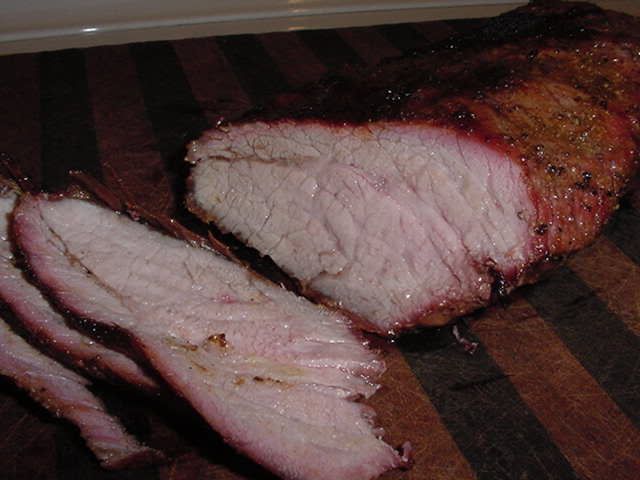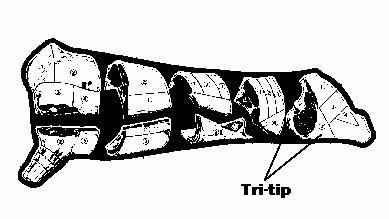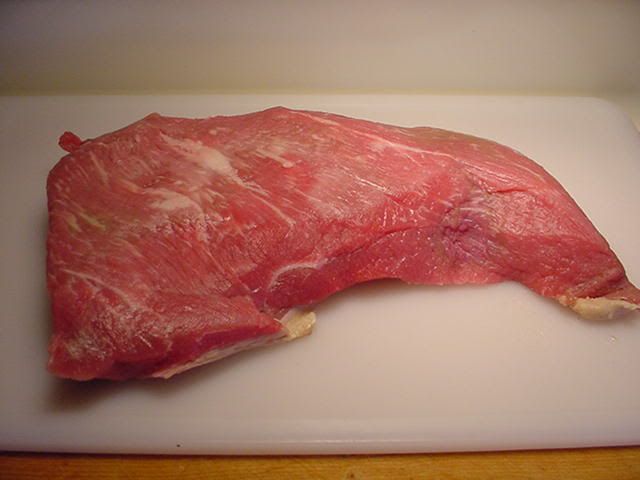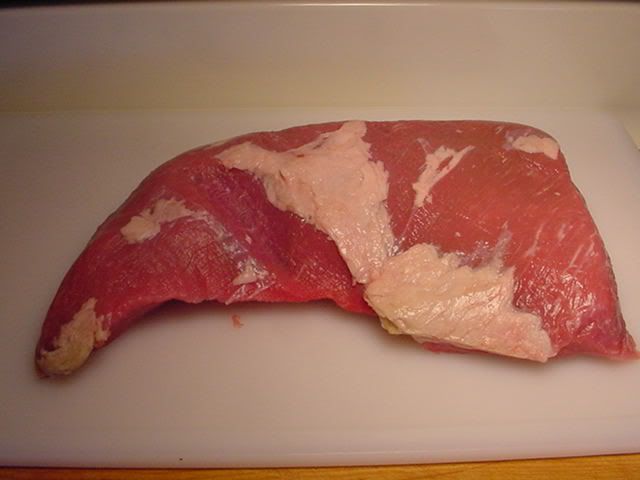BEEF - Tri-Tip

Tri-Tip, sometimes known as triangle roast is cut from the bottom of the sirloin. There are only two roasts on each steer, and after trimming they average 2 pounds.
The roast in the photographs tips the scale at 1-3/4 pounds. A tri-tip is an excellent choice for higher temperature grilling or can be cooked low and slow. Either method usually involves an end sear at higher temperatures. Tri-Tip is an good main course or can be sliced for sandwiches or fajitas. Slice against the grain for tenderness. Note that the grain direction changes from one end to the other.

Popular rubs for tri-tip are quite simple and contain ground parsley. They are known as “Santa Maria Style” rubs on the west coast. A typical starter rub is below. Don’t use a complex rub that may distract from the beef flavor. Apply a coating of rub an hour or so before the cook.
3 tablespoons sea salt
1 tablespoon granulated garlic powder
1/2 teaspoon dried parsley
1/2 teaspoon black pepper, medium grind
Injection or use of a marinade is an option to explore, but tri-tip has a wonderful beef flavor and is quite tender and moist on its own.
Cooking Method 1 – Set up the cooker for grilling with a direct set up and a grate temperature around 375°. Oak is the traditional wood for grilling tri-tip. Cook the roast for 15 or 20 minutes, turn and cook until the internal temperature is 125° to 135°. Remove and rest the roast while ramping up the cooker to searing temperatures. Return it for the sear, turning often. Rest it for 10 minutes and slice.
Cooking Method 2 – Set up the cooker for an indirect cook with barbecue temperatures around 250°. Oak or pecan are good choices for wood. Cook until the internal temperature is 125° to 135°, remove and rest while ramping up the cooker for searing. Return it for the sear, turning often. Rest it for 10 minutes and slice.
Cooking Method 3 - I am still experimenting with a hot water bath technique that is new to me, but so far I have had great results with steaks and pork chops - so I tried it on a tri-tip.
Season the roast. Put the roast in a zipper bag or a vacuum bag and submerge in 100° water for about an hour and a half. Meanwhile, set up the cooker for a direct cook using a grate temperature about 350°. Remove the roast from the bag, add more seasoning if needed. Grill the roast until the internal temperature is 125°. This will happen much quicker that when using Cooking Method 1 because the internal temperature of the roast will be 85° or higher when it hits the grill. Remove when the desired temperature is reached. Ramp up the cooker to searing temperatures while resting the roast. Return the roast for the sear, remove and rest a few minutes before slicing. Here is what it looked like.

No comments:
Post a Comment